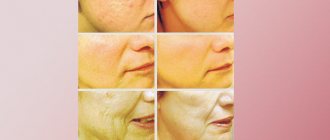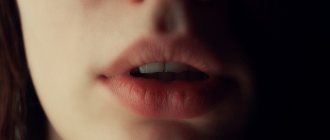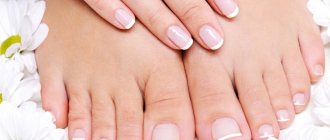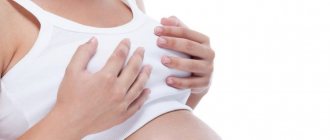Itching of the scrotum leads to physical and emotional discomfort. Scratching the skin brings temporary relief until the next relapse and often only worsens the problem. In most cases, if the scrotum itches , men are in no hurry to see a doctor. Sometimes itching can actually be eliminated on your own, but to do this you need to establish the cause of the discomfort.
What causes of itching of the scrotum are not dangerous?
There are reasons for the appearance of irritation on the testicles in men, which are not dangerous to health if they are eliminated in a timely manner. But it is important to remember that constant scratching of the itchy skin between the legs leads to thinning of the epidermis, the appearance of cracks and infection.
Itching and redness in the groin area in men can be caused by the following factors:
- Insufficient hygiene. This is a common condition that causes itching in the testicles and penis. Genitals need daily water treatments. If the usual rules are not followed and dirty underwear is worn, pathogenic bacteria multiply, causing unbearable discomfort. Droplets of urine fall on the combed areas, causing a burning sensation.
- Allergies to external irritants:
- synthetic linen fabric,
washing powder,
- caring cosmetics,
- water of high hardness or with an abundance of chemical additives.
All these factors cause redness and itching of the scrotum. To get rid of it, it is enough to identify and eliminate the irritant.
- Uncomfortable temperature conditions. When the genitals overheat, sweating increases and the sebaceous glands become clogged. This can be in hot weather or in cold weather, when a man wears synthetic clothes.
- Overwork, nervous tension and stress. As a protective reaction, the body produces histamine more intensively, which provokes itching and redness in the groin.
- Intensive hair growth. For this reason, the scrotum itches in adolescents during puberty. Over time, the problem disappears on its own, but you must restrain yourself from scratching the skin to prevent infection.
- Shaving the intimate area. A man can injure the skin of the scrotum and pubis with a razor. Upon contact with detergent, the damaged area itches and stings.
Red spots on the scrotum
The presence of blood stains on the scrotum can be confusing and frightening for a man. Although they are mostly harmless, they may indicate some sexually transmitted diseases.
Such spots are medically called angiokeratoma. Scrotal angiokeratoma are small, smooth, bright red or purple vascular tumors that often occur in fair-skinned men. They can be noticed at the end of adolescence, and also as a person grows older. The older a man gets, the more pronounced the rash appears. Initially they are small, smooth, bright red, blue vascular papules, but with age they become larger and darker. Although they are more common on the scrotum, they can also be seen on the head of the penis, groin, and lower abdomen.
At an early stage, these lesions may be asymptomatic, but as a person gets older, they begin to bother him. The spots may itch and bleed after minor trauma, which can lead to pain and discomfort.
Pathological conditions
Let's look at the most common diseases that cause itching on the scrotum.
Infectious diseases and parasites
- Pediculosis. Lice are transmitted through sexual contact and through household items. Insects begin to bother you only 2-3 weeks after infection. Activity of pubic and body lice is observed at night. The bite sites are very itchy, and there is a danger of secondary infection.
- Chlamydia. Chlamydia infections often affect the urethral canal. In addition to itching, there is a burning sensation in the testicular area in men, an increase in local and general temperature, and weakness.
- Genital herpes. The virus is most often transmitted through sexual contact. There may also be relapses due to hypothermia or decreased immunity. Symptoms of the disease are blisters with a yellowish liquid, which burst after 2 days, giving way to a crust. The affected area (scrotum, penis, anus, buttocks) is very itchy. The disease is very difficult to cure; remissions are followed by relapses.
- Inguinal athlete's foot. A fungal infection of the skin that is transmitted through contact with an infected person. A characteristic sign of the disease is the formation of scaly spots surrounded by a ridge. When moving and rubbing against clothes, a man feels not only itching, but also pain.
- Erythrasma. Pathogenic bacteria cause severe redness of the perineum, accompanied by mild itching. The disease is transmitted through contact with an infected person.
- Scabies mite. Itching is not caused by the parasite itself, but by its waste products, which accumulate in the upper layers of the skin. When infected with scabies mites, severe itching is felt in the scrotum and other parts of the body.
Psoriasis
The disease is not infectious in nature. May appear due to severe stress. It is characterized by the appearance of plaques on the body, including the scrotum.
Eczema
The cause of the disease can be any irritants, stress and diseases of the internal organs. With eczema, cracks are visible on the body with the appearance of fluid, and severe itching is felt.
Other reasons
- Dermatitis. The disease is accompanied by severe itching of the scrotum and rashes in the form of hives.
- Candidiasis. A fungal infection that causes itching, white discharge with an unpleasant odor.
- Tumor. The neoplasm can be benign or malignant. Modern methods make it possible to detect the disease at an early stage, and with timely diagnosis and treatment, the patient recovers.
- Insect bites. The scrotum may itch after bites from midges, mosquitoes, bedbugs and other insects. In most cases, redness and swelling appear along with the itching.
How itching and flaking are manifested and treated
Clinical manifestations, as well as the treatment regimen, of unpleasant symptoms depend on the reasons that led to the peeling of the skin on the scrotum.
Features of the treatment of fungal diseases
The following phenomena are considered signs of the presence of a fungus in the body: a rash and the merging of all existing spots into red areas, peeling of the skin, severe itching, damage to the nail plates.
Severe itching in the perineum
It is possible to restore erectile function! Proven FOLK CARE ... Reviews My story spotenciey.ru
Treatment of PROSTATITIS using a new method To restore the functions of the prostate, you need every day... Website Interview with a doctor bezprostatita.ru
The problem of the small size of the dignity has been solved. The mechanism of erection has been revealed... Official website Recovery bigbigrazmer.ru
The treatment regimen here consists of using alcohol and salicylic acid, which is used to lubricate the scrotum and other problem areas on the skin of an adult or child. Similar actions should be performed for at least a week. If the symptoms of the disease do not subside, experts recommend taking Ketoconazole for 14 days. In addition, doctors can prescribe therapy with Griseofulvin, which is used simultaneously with vegetable oil, with food. If the scrotum itches, then you should not panic, but get treatment.
Before starting treatment, you need to completely shave the hair in the scrotum area and regularly lubricate it with the specified sulfur-alcohol solution. From pharmaceutical ointments, Clotrimazole and Canesten are allowed to be used.
During treatment, you should adhere to several basic rules:
- Bathing in the bathtub or shower is prohibited, as this promotes the spread of fungus throughout the body.
- Get rid of synthetic underwear and replace it with cotton. Linen should be changed at least once a day.
- It is not recommended to have sexual intercourse even when using a condom, as you can infect another person.
If you adhere to the recommendations of doctors and follow these rules, then the herpes will quickly recede, and the scrotum will stop itching.
Ways to get rid of neuroallergic diseases
A person cannot ignore such a problem, because it begins quite quickly:
- Itching appears in the problem area.
- Large gray lesions with surrounding papules form.
- The skin swells, the blood vessels dilate. A person has a lymphocytic infiltrate.
Such problems are treated individually, taking into account the characteristics of the patient’s body. The most important thing is to ensure that the skin on the red scrotum stops cracking and peeling.
To treat neurodermatitis, in which the skin peels and itches, doctors prescribe the following ointments: tar, naphthalene, sulfur and containing glucocorticosteroids. In order to relieve pain, you can use anesthesin or menthol.
Standard therapy consists of taking a tranquilizer, antipsychotic, antihistamine, vitamins and eutherococcus. In addition, physical therapy is popular today.
To combat eczema, hyposensitizing agents, bromine preparations, and tranquilizers are widely used. If the baby has edema, Furosemide is prescribed.
In the case when eczema is advanced, the scrotum and other parts of the body are involved in the process, the doctor recommends taking glucocorticosteroids. Once every 7 days a man should take a bath with potassium permanganate.
People who are affected by herpes or neurodermatitis will have to constantly follow the following recommendations:

Rejection of bad habits
- Avoid salt and fatty foods.
- Reduce consumption of foods that are rich in carbohydrates.
- Drink less water.
- Forget about alcoholic drinks, smoking, chocolate and citrus fruits.
- Newborns who are breastfed should be fed with adapted formulas.
In addition, experts remind that the human body needs proper and regular rest. Men whose scrotum cracks and peels, which is not associated with its nailing, should sleep about 8 hours and visit sanatoriums in the summer. If herpes has caused your testicles to turn red, then you should not put off visiting a doctor.
Itching in the scrotum: diagnosis
If you have not been able to figure out on your own why your testicles are itching, or if there is cause for concern, you should go to a dermatologist.
After the history, the doctor will examine the perineal area. If it is impossible to make an accurate diagnosis, additional studies will be required:
- Analysis of urine,
- blood analysis,
- allergen test,
- smear,
- scraping
If a serious pathology is suspected, the patient receives a referral for examination to a venereologist, endocrinologist, urologist and other specialists, and an instrumental examination.
It is imperative to visit a doctor if additional symptoms appear:
- pain in the scrotum area,
- edema,
- redness,
- sensation of a foreign body in the eggs.
White spots on the scrotum
White or cream spots do not have a specific shape. Some can bother a person and itch a lot, while some do not cause any discomfort.
As for the size of the spots, it can be as small as a seed or as large as a pea (in some cases even larger). There is no age limit for the occurrence of these spots. 20% of the male population suffers from these white spots on the testicles. Some reasons for their appearance.
1 Ingrown hair . Improper shaving practices in the genital area are one of the most common causes of white patches. Using hair removal methods such as tweezing, waxing, or using chemicals can result in white or cream-colored patches on the scrotum and penis. The hair tends to grow in the opposite direction and takes the form of ingrown hairs, which cause painful bumps to form. No need to worry about this. This stain goes away within a few days. To prevent recurrence of such stains, choose the right shaving method.
2 Follicle or sebaceous cysts . This is a harmless condition caused by a bacterial or fungal infection in the follicle (the root or opening of the hair). Each follicle has a sebaceous gland that functions to produce the skin's natural oils. They are the ones who provide skin flexibility. When shaving, bacteria on the skin called staph travel to this root, causing an infection. As a result, an inflamed follicle is formed that is itchy and painful.
Proper hygiene is the only way to deal with this. It is necessary to wash the scrotum with soap daily. Then dry it with a towel to avoid getting wet (to stop the growth of bacteria). If the condition does not improve within a couple of weeks, you should consult a doctor. Perhaps he will prescribe a course of antibiotics or suggest a surgical method. If not treated properly, these spots can develop into subcutaneous cysts.
3 Sexually transmitted diseases . The herpes virus is the most common cause of white spots on the scrotum. If a partner is infected with this virus, it is likely to be transmitted to another partner. This can lead to white pimples appearing in all parts of the genitals. It is necessary to get medical attention, otherwise this virus can easily spread to other unaffected areas of the body. Genital warts are another cause associated with STDs. They are caused by the human papillomavirus (HPV). The most common treatment for these genital warts is the use of creams or a laser procedure to remove them.
4 Pimples. Pimples on the testicles are very common, especially in young people. They are painless and do not require treatment. Appear due to increased separation of the sebaceous glands. Strengthening hygiene measures will prevent their formation.
Treatment and prevention
The doctor should prescribe therapy after determining why the man’s genitals are red and itchy. The drugs differ in each case, and the individual characteristics of the body are also taken into account.
- If itching of the scrotum occurs due to allergies or dermatitis, the irritant must be eliminated. To speed up the healing process, you can treat the genitals with a weak solution of potassium permanganate, furatsilin, or take baths with decoctions of chamomile, plantain, and string.
- Treatment for parasites consists of treating the scrotum with sprays and creams: Crotamiton, Medifox, Spregal.
- To get rid of chlamydia, antibacterial therapy with Azithromycin, Macropen, Clarithromycin, Sumamed is necessary. At the same time you need to drink Methyluracil, Taquitin.
- You can treat genital herpes with ointments: Acyclovir, Herpeblock, Famciclovir, take Amiksin tablets, vitamins to strengthen the immune system.
- For inguinal epidermophytosis, treatment of the affected area with Triderm, Mycozolon, and sulfur-tar ointment is prescribed. Sometimes it is necessary to take Suprastin, Tavegil, Zodak.
- To get rid of chlamydia, antibacterial therapy with Azithromycin, Macropen, Clarithromycin, Sumamed is necessary. At the same time you need to drink Methyluracil, Taquitin.
- Boric alcohol, brilliant green, and Chlorhexidine will help relieve redness and itching after an insect bite. If you have a severe allergy to saliva or insect venom, you will need to take Suprastin, Loratadine.
In most cases, itching of the scrotum can be avoided if you remember the following prevention measures:
- Take a shower and change your linen daily.
- Do not use low-quality cosmetics. You can buy baby skin care products.
- Wear underwear made from natural fabrics and in the right size.
- Be selective and prudent during sexual intercourse.
- Avoid stressful situations, get good sleep.
- Go for preventive examinations to the doctor.
- Eat right, take vitamins.
If the itching does not go away within 3 days, you should definitely go to the clinic. Timely diagnosis and treatment provide a chance for recovery in the most complex pathologies.
If a man’s balls itch, how to treat it?
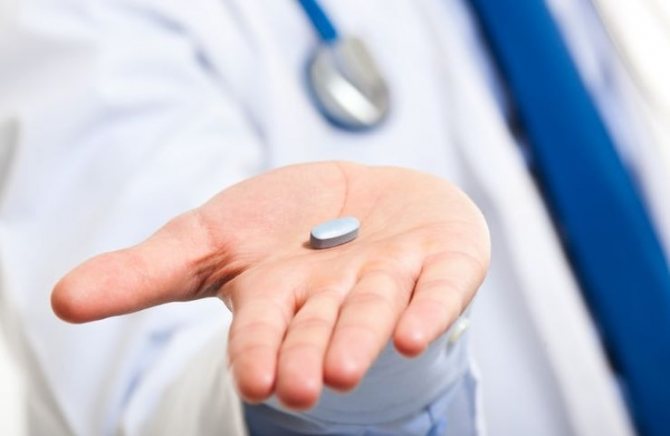
Severe itching in the scrotum in men undoubtedly requires appropriate treatment for the disease. But, do not forget that many of the drugs listed below can help in one case, but in another, on the contrary, only cause harm. Therefore, be sure to consult your doctor before taking them and check the dosage you need.
For allergies
To relieve the symptoms of allergic skin irritation, it will be enough to take one or two tablets of one of the following drugs:
For pediculosis
There are many products designed specifically to get rid of pubic lice. Among them are:
Emulsion concentrates for dilution:
For fungal infection
If the presence of fungus is confirmed through laboratory tests, the doctor will prescribe treatment appropriate to the type of infection you have. Experts often consider it advisable to use the following drugs:
For oral administration:
- Itraconazole
- Ketoconazole
- Nystatin
- Fluconazole
- For external use:
- Triderm
- Clotrimazole
- Miconazole
For infectious diseases
In no case should treatment of such diseases be carried out independently, but only under the supervision of a specialist.
When treating syphilis, the patient is treated inpatiently, prescribing an aqueous solution of penicillin for administration at intervals of three hours. Symptoms usually go away within a week, but you must continue taking the drug for at least twenty-four days.
Herpes is treated using the following drugs:
- Herpferon
- Pharmciclovir
- Valaciclovir
- Acyclovir
To relieve unpleasant symptoms, the patient is recommended to resort to methods such as:
| |
| Inguinal epidermis | The patient is prescribed antifungal medications:
|
| |
| Scabies | To treat genital scabies, doctors prescribe acaricidal medications:
|
| To relieve discomfort, it is recommended to take baths with the addition of decoctions of herbs and plants: oak bark, chamomile, calendula and others | |
| Chlamydia | For the treatment of chlamydia, the doctor prescribes medications:
|
| |
| Erythrasma | Doctors prescribe exfoliating and disinfectant preparations for topical use for erythrasma:
|
Effective folk remedies for erythrasma:
|
Spots on the scrotum of a child
If spots are detected on a child’s scrotum, it is necessary to evaluate his general condition. If he is not capricious and does not cry, then such spots are the result of ordinary diaper rash, which often occurs in babies.
When a child is restless and constantly cries, the cause of these spots may be as follows:
- Various skin injuries. This could be a fall, a bruise, or a condition called testicular torsion.
- Dropsy.
- Allergy.
- Infection of the reproductive system.
Treatment of non-infectious scrotal spots

The origin of all non-infectious skin problems is examined only by a dermatologist. Moreover, therapeutic tactics depend on the final diagnosis. For non-infectious problems, treatment looks like this:
- Eczema. The patient is advised to take hyposensitizing medications. At the same time, they influence the patient’s nervous system with the help of antipsychotic drugs or simply with the help of bromine. For swelling of the scrotum, diuretics are indicated. And to strengthen the body - ginseng and vitamin complexes.
- Psoriasis. There is no single effective treatment. But most often sedatives are used in combination with vitamin supplements. In rare cases, the patient is prescribed local medications (ointments and creams) with glucocorticosteroids. Externally, physical therapy may be prescribed for the groin and scrotum area.
- Vitiligo. There is also no clear-cut therapy here. But in most cases, the patient undergoes skin irradiation with ultraviolet light. Vitamins and glucocorticosteroids are prescribed.
- Fungus. If a patient has a fungal infection of the skin, then it is necessary to take antifungal medications internally and ointments for external use. At the same time, antihistamines are prescribed.
- For diaper rash. Here the patient is advised to treat the affected area with antiseptics. After drying the skin, ointments and creams with a healing healing effect are applied.
It is very important to understand that any skin problem (for example, pigmentation or rash) in intimate areas should not be left to chance. Otherwise, the pathology can greatly harm the body if it is infectious in nature. Therefore, you should not put off visiting a doctor, especially if you suspect a sexually transmitted disease. And false shame in this case is not your best friend, but rather even an enemy.
When to see a doctor
Testicular itching may not seem very exciting at first glance. In some cases, a person may recognize the cause immediately and may not need to seek medical attention.
If a rash or severe itching appears, a person should consult a doctor so that he can rule out certain causes and determine the correct treatment. In addition, a doctor should examine any rash that changes or begins to break out into a rash.
Anyone who suspects they have pubic lice should visit their doctor for appropriate treatment to kill the lice and their eggs.
How to avoid the problem
If a man suddenly feels the development of severe itching in the scrotum area, which does not stop for several days, but only intensifies in its manifestation, then it is necessary to undergo examination by a dermatologist. A specialist of this profile will examine the genital organs and the skin surface of the intimate area.
After this, a bacterial study of the taken biological material is carried out to establish the true cause of the pathological symptom, as a result of which the testicles and the skin located under them began to itch. The formation of a therapeutic course, the selection of medications for external treatment of the scrotum and drugs produced in other pharmacological forms (intramuscular injections, tablets) depend on the results of laboratory tests.
In order to prevent redness, flaking and itching in the scrotum, a person must thoroughly and regularly wash the perineum, avoid contact with allergens, fight increased sweating, give up bad habits, constantly exercise, monitor the state of the immune system, toughen up and wash your hands after visiting public places. And, most importantly, do not lead a promiscuous sex life.
Itching and discomfort in the testicles are caused by many factors. Only the attending physician can establish the exact cause, who will promptly conduct a visual examination of the patient, prescribe the necessary tests, study the symptoms and prescribe adequate treatment.
Itching in the scrotum is a symptom accompanying a variety of skin diseases and sexually transmitted infections. Often men do not understand for a long time why the scrotum itches, but do not consult a doctor. There can be a huge number of reasons. One thing is clear for sure - some kind of help from a specialist will definitely not do any harm in such a sensitive issue.
When a man's scrotum itches, he begins to suspect that he has some kind of disease. Of course, you shouldn’t panic, but you shouldn’t ignore such signals either. Perhaps the cause of such symptoms is stress or incorrectly selected cosmetics.
It happens that discomfort in the groin was caused by cosmetic products that are unsuitable for your skin. Make a choice in favor of hypoallergenic cosmetics or those based on natural ingredients. If your skin becomes irritated after shaving, use skin care products that alleviate the skin condition. These can be soothing lotions, moisturizing creams, etc.
If there are parasites in the body, drugs that destroy infectious agents are used in combination with antipruritic ointments. For allergic reactions, antihistamines are used. These can be tablets and creams used externally. To get rid of mycoses and candidiasis, antifungal medications are prescribed.
To treat viruses, the doctor can prescribe various medications that affect the entire body as a whole:
- antibiotics,
- corticosteroids,
- antihistamines,
- immunomodulators,
- vitamin complexes.
The selection of medications is carried out by a specialist and depends on the severity of the disease, the patient’s condition, and the individual characteristics of the body. Self-treatment of infectious diseases is unacceptable, as this can lead to complications.
It is distracting and prevents you from concentrating on your work. A man experiencing such ailment quickly becomes irritable. His nervous system is shaking. And this makes you feel worse.
You can eliminate itching in the groin by identifying the cause of its occurrence.
The key reason for the development of itching is the inflammatory reaction. When it develops, an immune response occurs. The body's defense system begins to produce active compounds that can stop the destructive process.
Among them are histamine and prostaglandins. Their number in the inflamed area increases sharply. This leads to irritation of the sensitive nerve fibers located in the designated area.
A pain syndrome occurs, which is perceived by a person as burning and itching.
Various factors can give impetus to the development of the inflammatory response. Among them there are nonspecific and pathogenic (infectious) provocateurs.
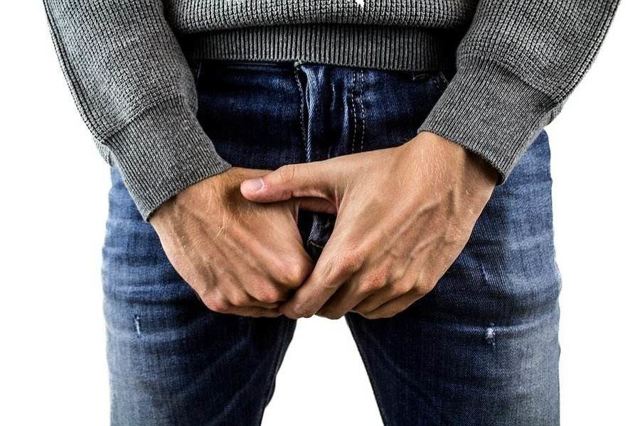
Non-specific includes:
- Failure to comply with personal hygiene rules. Itching in the groin often occurs due to the accumulation of dirt. Mixing with sweat and sebum, it forms an extract that clogs the passages of the sweat glands. Inflammation develops, the first symptom of which is mild itching. It goes away after taking a shower using detergents. Urine can irritate the skin. If it is not washed off from the genitals, it causes painful and tickling sensations. Warm water, soap and a washcloth help quickly eliminate the problem.
- Incorrectly selected underwear. Wearing tight, narrow toiletries made from synthetic fabrics creates a greenhouse effect and friction. When the mucous membranes become covered with sweat, the production of subcutaneous sebum increases. All this together irritates the skin and causes itching in the groin. It gives rise to the desire to scratch the sweaty surface. Scratching damages the skin. Any wounds and abrasions become an open gate for bacterial and fungal infections to enter and intensify an existing symptom.
Nervous strain and stress, any mental disorders change the composition of skin secretions and contribute to the occurrence of itching. Eliminating the irritant normalizes the condition without medications.
Systemic pathologies can provoke itching in the groin. In this case, the described symptom is only part of the clinical picture. This is clearly demonstrated by the following table.
| Name of the disease | Cause | Associated symptoms |
| Diabetes | Increased sugar in blood and urine | Itchy sensations occur not only in the perineum, but also on the stomach, between the knees, buttocks, and elbows. The patient is tormented by severe thirst. He gains weight without changing his usual diet. |
| Kidney diseases | Increased nitrogen concentration in the blood. It begins to come out along with sweat and irritate the skin, causing itching in the perineum. | Discomfort in the back, changes in the color of urine (it becomes darker), the appearance of swelling in the arms and legs, bags under the eyes, sudden weight loss while following the usual diet |
| Liver diseases (cirrhosis, hepatitis C) | An increase in the level of bile salts in the plasma, extrahepatic blockage of the bile ducts causes an allergic reaction. It causes itchy skin | General malaise, decreased performance. Drowsiness, fatigue, dyspepsia (nausea, vomiting, stool instability), feeling of heaviness or pain in the right hypochondrium |
| Pathologies of the pancreas | The inflamed gland swells, increases in volume, and begins to compress nearby organs. As a result, the outflow of bile is disrupted and it is absorbed into the blood. Bile contains acids that, when they enter the bloodstream, reach nerve endings, causing itchy skin. | Severe pain in the left hypochondrium |
| Autoimmune and inflammatory dermatoses | Stress, chronic infections, gene mutations, genetic predisposition | Accompanied by the appearance of rash and peeling |
| Iron deficiency | Lack of microelements | Itching occurs on contact with water |
| Benign and malignant tumors | Allergic reactions to an increase in cancer cells. Direct effect on nerves in brain tumors | The presence of a neoplasm formation process |
We suggest you familiarize yourself with How to tie a men's neckerchief under a shirt (10 photos)
There are a number of systemic diseases that can cause itching in the groin. These include metabolic and endocrinological disorders, HIV, and helminthic infestations. Neurological diseases (multiple sclerosis, neuropathy, postherpetic neuralgia), psychosomatic disorders (depression, eating disorders).
Severe itching in the perineal area in men can also occur due to the development of a viral or bacterial infection. Each of them has its own characteristic symptoms; treatment of itching in this case must begin with eliminating the pathogenic agent. The following table will help you get a complete picture of possible triggering moments.
| Name of infection | Pathogen | Factors provocateurs | Additional symptoms |
| Candidal urethritis | fungus | Long-term use of antiviral drugs, sexual contact with an infected partner, decreased immunity | Itching and burning in the groin, purulent discharge from the glans that smells damp |
| Balanoposthitis | fungus | Lack of vitamins, anemia, allergic reactions, diabetes | Itching and burning in the area of the head and foreskin, pain during sexual intercourse, swelling and redness of the head, curdled or purulent discharge |
| Genital herpes | herpes viruses type 2 | Skin damage and weakened immunity | Itching and burning, the appearance of small blisters filled with liquid, painful urination, enlarged lymph nodes in the groin |
| Chlamydia | Intracellular microorganisms Chlamydia trachomatis | Sexual contact with an infected partner | Unpleasant sensations in the perineum, mild burning and itching in the anus, testicles, scrotum. Scanty glassy discharge from the urethra, general weakness |
| Ureaplasmosis | Ureaplasma urealyticum | Sexual contact with an infected person | Discomfort when urinating (pain and burning in the urethra), hardening of the epididymis |
| Athlete's foot | Fungus | Close household or sexual contact with a sick person | The appearance of pink spots, blisters form in the groin and on the surface of the thighs. The rash spreads throughout the perineum, but does not “enter” the skin of the penis |
Pubic lice and scabies should be included in a separate group. The first disease is caused by lice, the second by scabies mites. Itching in this case becomes a symptom of the development of an allergic reaction to the waste products of small parasites. Constant scratching causes skin redness and flaking.
- Wearing uncomfortable underwear;
- Allergy to hygiene products;
- Increased hair growth.

